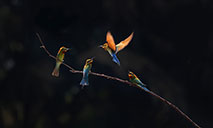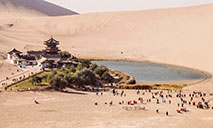Splendid Dunhuang: Millennial cultural embassy
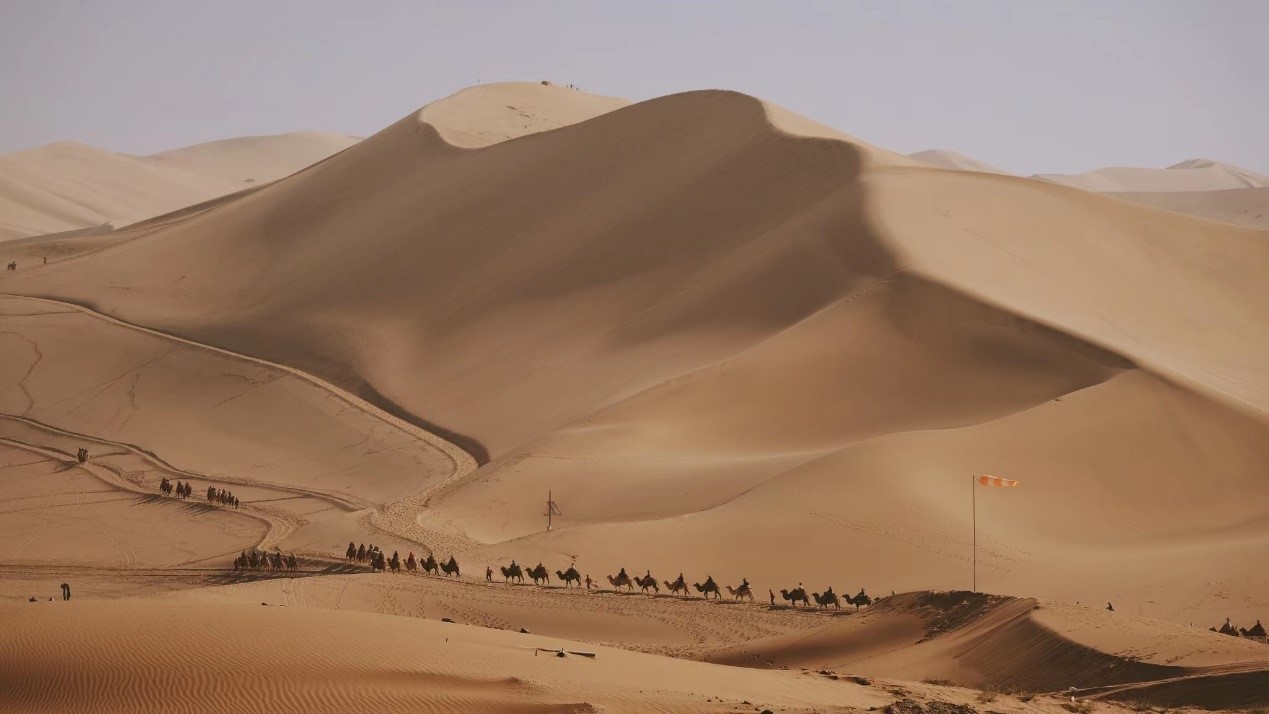
Photo taken on Oct. 16, 2021, shows the desert scenery of Mingsha Mountain and the Crescent Spring scenic area in Dunhuang, northwest China’s Gansu Province. (People's Daily Online/Lv Qiang)
"I am very anxious to see you, but I have no luck" - a Sogdian woman named Miwnay who followed her husband to do business in Dunhuang, northwest China's Gansu Province, lamented in a letter to her far-away mother, in which she indulged in bouts of nostalgia and pined for home. Sadly, her mother never had a chance to read of her grief, as the letter was engulfed by a sandstorm and buried under layers of thick sand. Thousands of years later, the letter was found by archaeologist Aurel Stein, shining a light on the bustling trade and cultural exchanges between East and West along the ancient Silk Road.
Lying at the edge of the Taklamakan Desert, Dunhuang is located at a cultural and religious crossroads on the ancient Silk Road. Over 700 years ago, when Italian adventurer Marco Polo first arrived at Dunhuang, which was crowded with people of different nationalities, he was left spellbound by the thriving fusion of international trade and culture. As the first trading cities encountered by foreign merchants, Dunhuang turned into a fantastic marketplace and led to a cultural big bang that created an unprecedented connection between East and West. The ancient Silk Road has been swallowed up by time, but Duhuang remains a vibrant hub of exchanges as the Belt and Road Initiative has reinvigorated the city, injecting a new energy into this ancient oasis.
"Dunhuang is a city with a long history, forming a distinctive Dunhuang culture, with openness and inclusiveness as core values. This is the reason why Dunhuang is still shining its ancient light on the modern era," said Shi Mingxiu, the curator of Dunhuang Museum.
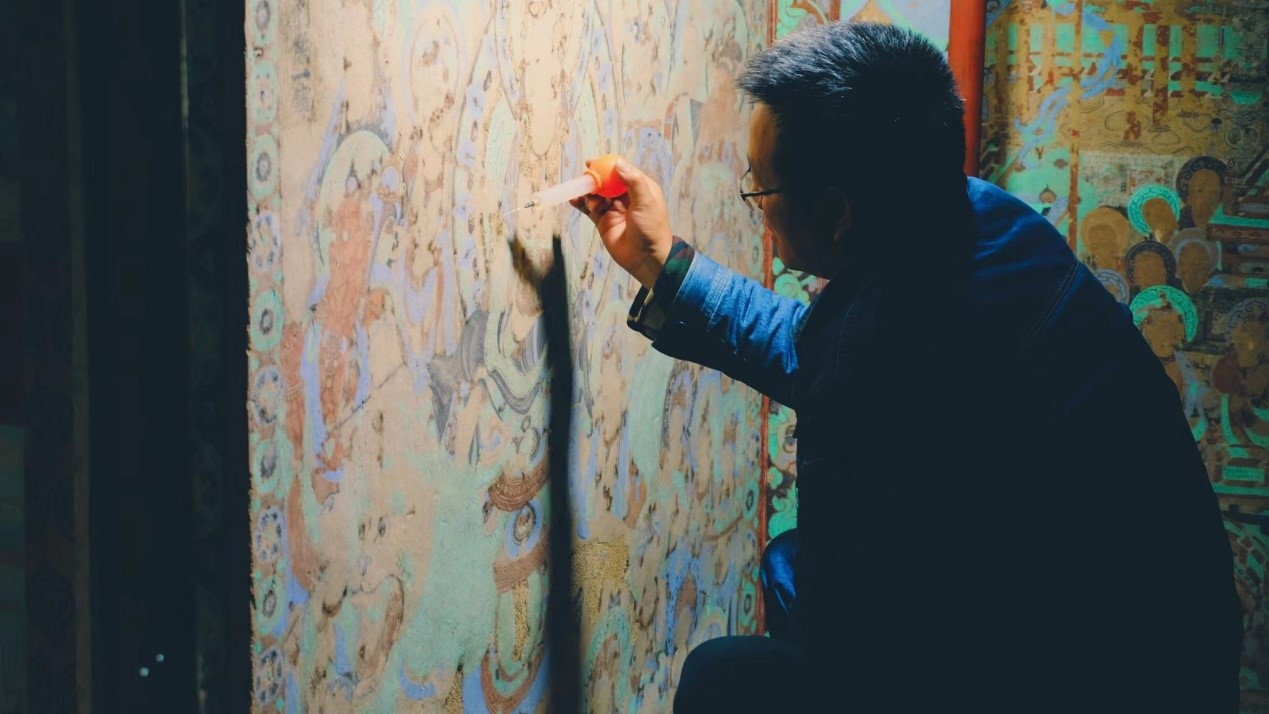
Photo taken on Oct.15, 2021 shows a cultural relic conservation expert from the Dunhuang Academy restoring a mural at Mogao Grottoes in Dunhuang, northwest China’s Gansu Province. (People's Daily Online/Lv Qiang)
Global, multicultural past
Some twenty-five kilometers southeast of Dunhuang, hundreds of caves are hewn into a cliff lavishly decorated with wall paintings and sculptural works. Buddhist gods in their sequestered shrines have witnessed the flourishing international exchanges between the diverse peoples who traversed the great trade routes of antiquity, stretching from China to the Mediterranean Sea.
"The history of this ancient Silk Road city is reflected in the Mogao Grottoes, the depositary of a multicultural past that adds fluidity and color to Chinese civilization," said Shi.
The Mogao Grottoes, also known as the Qianfodong (Caves of the Thousand Buddhas), boast a rich trove of Buddhist artworks, including more than 2,000 sculptures and 45,000 square meters of murals that span a thousand years and contain a wide range of iconography such as Chinese deities and Hindu gods.
These Buddhist artworks show a striking cultural diversity in the caves. The murals in the 492 Caves at Mogao depict how Buddhism spread into and became indigenized in China. One example is the Bodhisattva known as Avalokitesvara, which was transformed into the figure of Guanyin in China. The Nine-Colored Deer Jataka in Cave 257 is a Chinese interpretation of the Ruru Jataka, which originated in India, and tells of the Bodhisattva's birth as a deer. The characters in the murals with their different clothing styles also reflect the busy cultural exchanges that took place in Dunhuang.
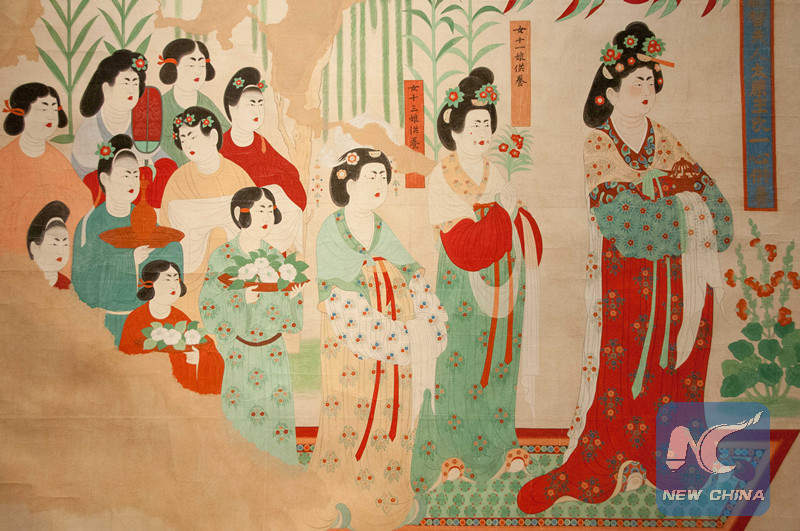
(Photo/Xinhua)
"The strong inclusiveness of Chinese culture allowed people in Dunhuang to enjoy, respect, and absorb the porous cultures from Central and Western Asia, as well as Europe, which resulted in the brilliant cultural fusion in Dunhuang," said Shi. "This mirrors a confident China that embraced foreign influences with a sense of tolerance and openness."
People from inside and outside China can find traces of their aboriginal culture in this grand cultural cache. The world-famous Cave 17, also known as the Library Cave, is home to more than 50,000 cultural relics including scrolls and manuscripts that shed light on the global civilization of the time. Sealed away for more than a millennium before their rediscovery in 1900, these precious manuscripts contain books of Psalms in Syriac, the only surviving copies of essential Mantras, rare manuscripts with Hebrew prayer, and a book of omens written in Old Turkic, providing valuable materials for other cultures to study their past.
"Dunhuang is not only a splendid treasure of ancient Chinese civilization but also an important witness to the frequent cultural integration and mutual learning among the diverse civilizations on the ancient Silk Road," said Shi. "The multiculturalism is testament to Dunhuang's past, which benefited both China and the rest of the world."
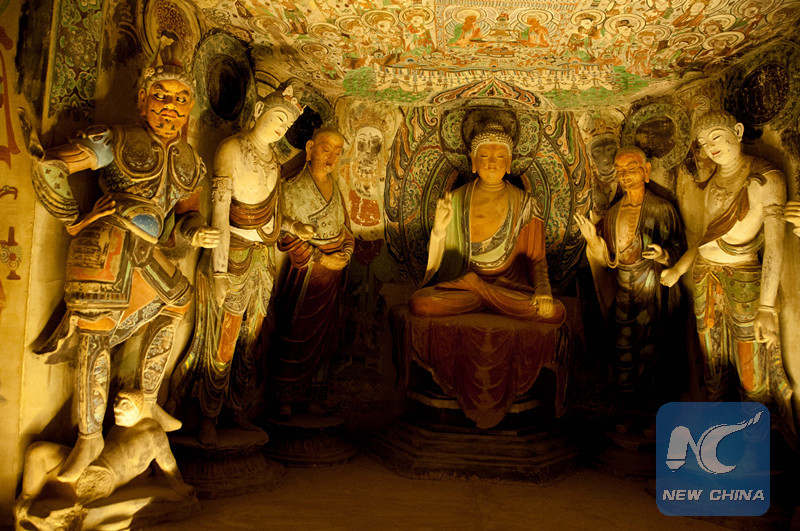
(Photo/Xinhua)
Ancient culture that thrives today
The best way to protect a culture is to make it popular again. Scholars from Dunhuang Academy have looked into ways of protecting and promoting Dunhuang arts for decades, looking to bring the glorious culture of Dunhuang alive in the modern age.
To this end, Dunhuang Academy (the Academy) launched the Digital Dunhuang Project, where visitors from around the world can enjoy frescoes and painted sculptures in 30 caves for free. In 2020, the Academy and tech giant Tencent jointly launched a WeChat mini-program offering online tours of China's Dunhuang Mogao Grottoes. Tourists can enjoy frescoes and Chinese Buddhist art in the caves by just clicking on their phones and learning about the stories behind the relics.
In October, the Academy teamed up with Chinese telecom giant Huawei to launch the "Flying Apsaras" thematic tour, which offers visitors an immersive fantasy experience. The AI technology shows off the cultural relics to visitors before they even enter the physical caves. With this technology, the visitors can enjoy the artwork in greater detail and obtain more information about it.
In addition, the Academy has also blazed new trails in innovative cultural products such as music, games and cartoons to further unleash the vitality of the cultural relics that date back thousands of years.
"The culture of Dunhuang needs modern content to thrive. Digital and innovative cultural products can help the public better appreciate the artistic charm and cultural value of Dunhuang, which will bring the public closer to Dunhuang culture and pass on these splendid ancient cultural artifacts to future generations," said Yu Tianxiu, director of the academy's cultural relics digitalization institute.
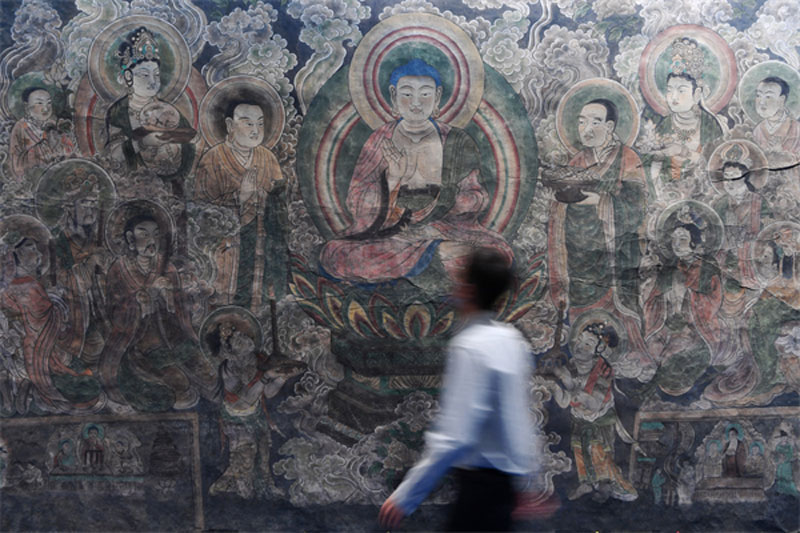
A visitor visits an exhibition of the duplications of Dunhuang overseas fine cultural relics in Dunhuang city, Northwest China's Gansu province, Sept 24, 2021. (Photo/Xinhua)
The Belt and Road Initiative has also brought new energy to Dunhuang culture. The initiative, which not only features the connectivity between markets but also exchanges of academia and culture, has further promoted the Dunhuang culture to the world. The Dunhuang Academy is now working with Western colleges and museums on preservation techniques and is sharing its experience in historical restoration and digitalization with others along the Silk Road.
"We have conducted academic exchanges and held exhibitions in different countries, introducing the culture of Dunhuang to more people in other corners of the world and driving the connection of people from the Belt and Road countries," said Guo Qinglin, deputy director of Dunhuang Academy.
In September, more than 200 representatives of countries and regions and international organizations, including officials, diplomats, and experts attended the 5th China Silk Road (Dunhuang) International Cultural Expo and the 10th Dunhuang Tour-Silk Road International Tourism Festival, with the aim of enhancing understanding of Dunhuang culture and promoting cultural exchange and cooperation.
The hubbub of voices along the ancient trade route may have been silenced over the course of history, but Dunhuang city will always embrace the spirit of the Silk Road, which served as a conduit for the exchange of cultures, trade materials, and knowledge between the East and the West for millennia.
"Dunhuang might have lost its status as the center of world trade, but the city will always be a blazing beacon for multiculturalism," said Shi.
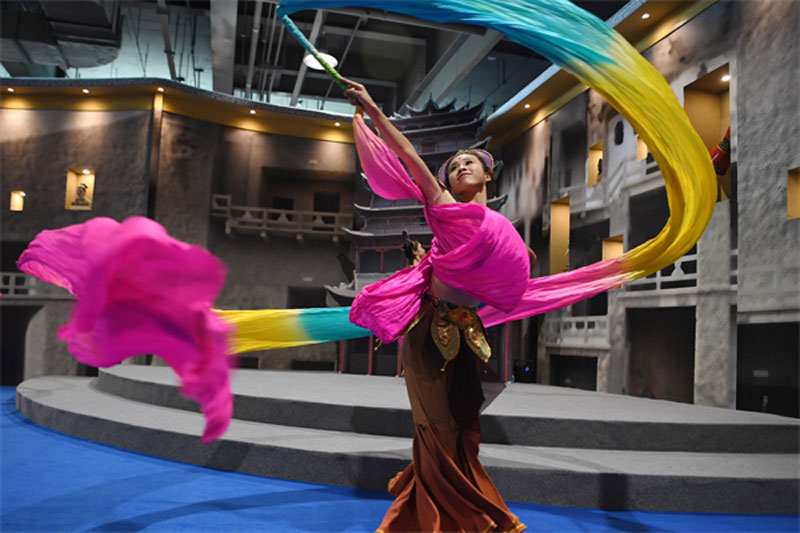
A performer dances at an exhibition of the duplications of Dunhuang overseas fine cultural relics in Dunhuang city, Northwest China's Gansu province, Sept 24, 2021. (Photo/Xinhua)
Photos
Related Stories
- 12,000 mirrors! A peek at China's largest "super mirror power plant" in Dunhuang
- China’s Dunhuang Academy seeks to bring back lost cultural relics through digitalization
- Plants by Crescent Lake turn greener after rain in Dunhuang
- Supermoon hangs over Chinese ancient city Dunhuang
- Creative cultural products bring new life to 1,000-year-old Dunhuang culture
- Dunhuang-themed products a hit on livestream
Copyright © 2021 People's Daily Online. All Rights Reserved.







